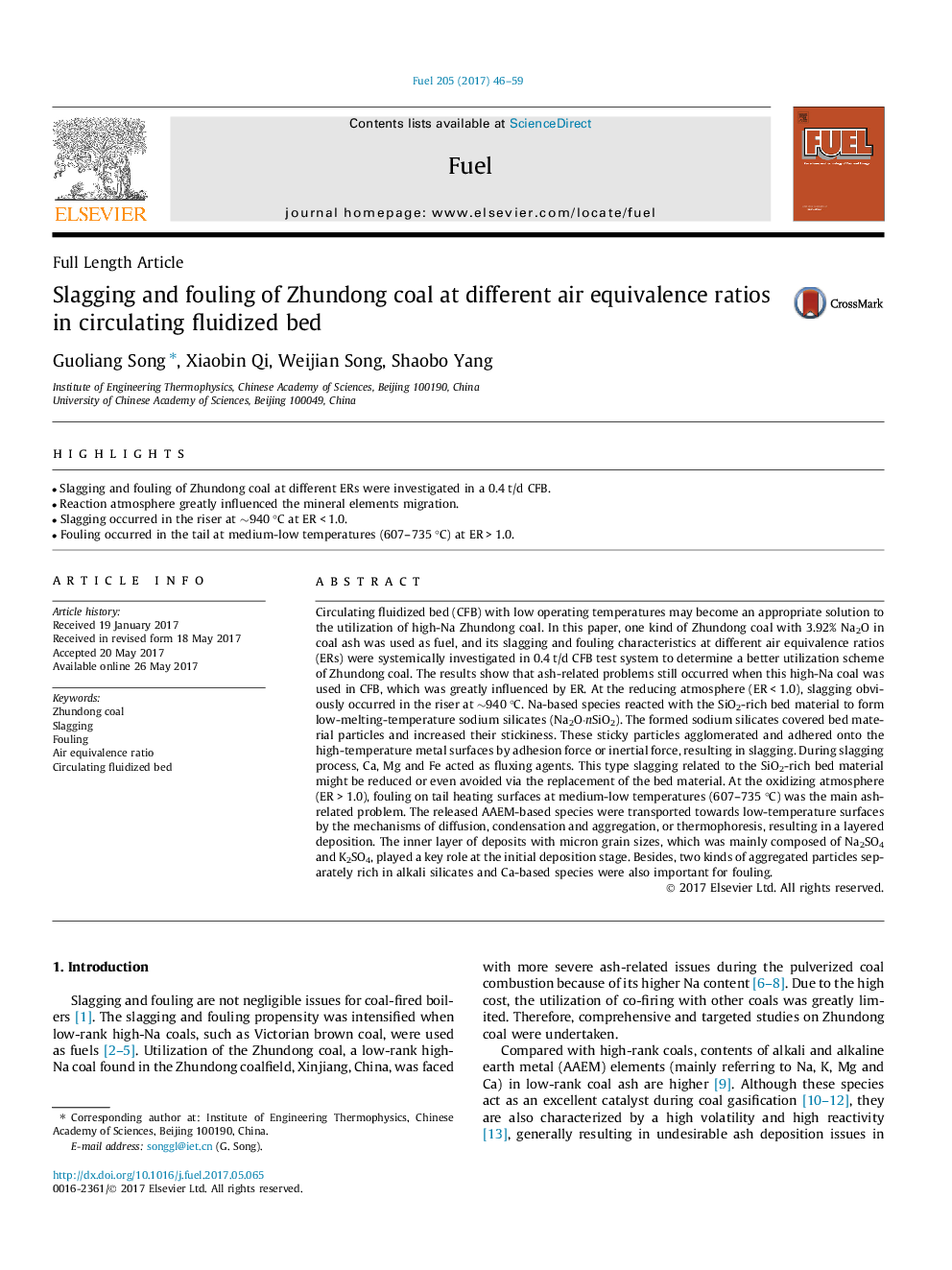| Article ID | Journal | Published Year | Pages | File Type |
|---|---|---|---|---|
| 4768624 | Fuel | 2017 | 14 Pages |
Abstract
Circulating fluidized bed (CFB) with low operating temperatures may become an appropriate solution to the utilization of high-Na Zhundong coal. In this paper, one kind of Zhundong coal with 3.92% Na2O in coal ash was used as fuel, and its slagging and fouling characteristics at different air equivalence ratios (ERs) were systemically investigated in 0.4 t/d CFB test system to determine a better utilization scheme of Zhundong coal. The results show that ash-related problems still occurred when this high-Na coal was used in CFB, which was greatly influenced by ER. At the reducing atmosphere (ER < 1.0), slagging obviously occurred in the riser at â¼940 °C. Na-based species reacted with the SiO2-rich bed material to form low-melting-temperature sodium silicates (Na2O·nSiO2). The formed sodium silicates covered bed material particles and increased their stickiness. These sticky particles agglomerated and adhered onto the high-temperature metal surfaces by adhesion force or inertial force, resulting in slagging. During slagging process, Ca, Mg and Fe acted as fluxing agents. This type slagging related to the SiO2-rich bed material might be reduced or even avoided via the replacement of the bed material. At the oxidizing atmosphere (ER > 1.0), fouling on tail heating surfaces at medium-low temperatures (607-735 °C) was the main ash-related problem. The released AAEM-based species were transported towards low-temperature surfaces by the mechanisms of diffusion, condensation and aggregation, or thermophoresis, resulting in a layered deposition. The inner layer of deposits with micron grain sizes, which was mainly composed of Na2SO4 and K2SO4, played a key role at the initial deposition stage. Besides, two kinds of aggregated particles separately rich in alkali silicates and Ca-based species were also important for fouling.
Related Topics
Physical Sciences and Engineering
Chemical Engineering
Chemical Engineering (General)
Authors
Guoliang Song, Xiaobin Qi, Weijian Song, Shaobo Yang,
